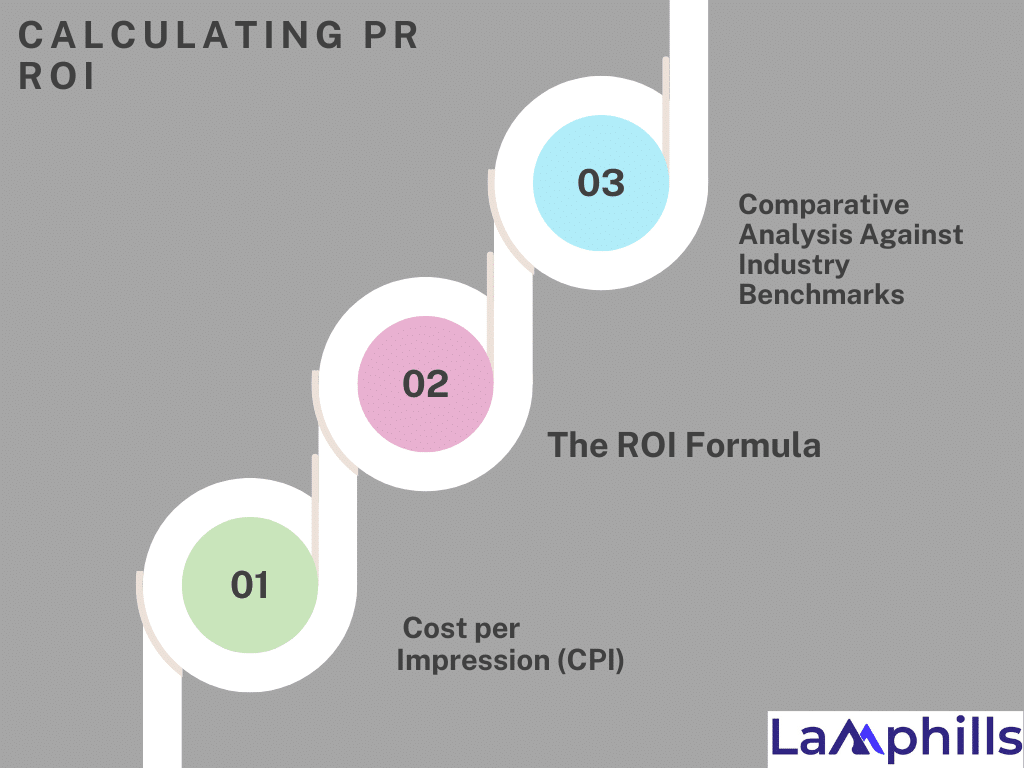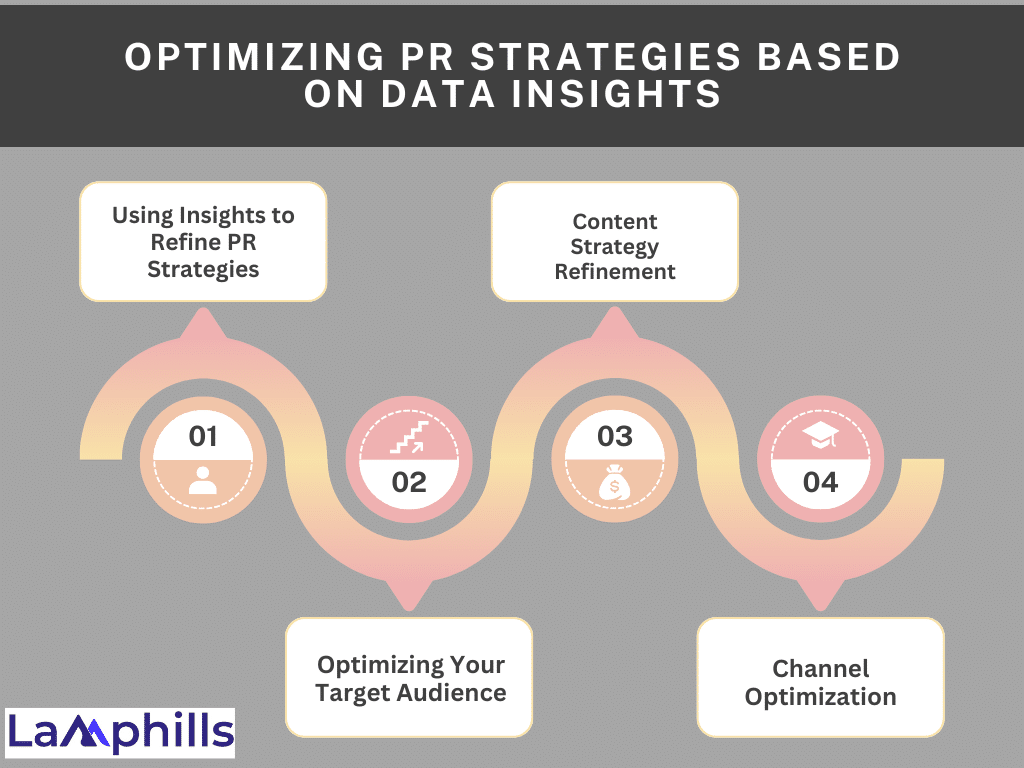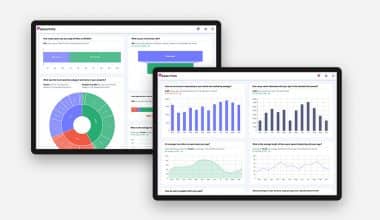Today, we will go on a journey by digging headfirst into a topic that is both critical and frequently perplexing: PR ROI measurement. Imagine you’ve just finished a public relations campaign that landed you tons of media coverage. I can imagine your level of happiness, but then reality sets in: how do you know if all of that buzz converted into tangible benefits for your business?
That’s where the art of mastering Pr Roi measurement comes in. Believe me, I’ve been there, struggling with data sheets and numbers, trying to figure out what it all means for the success of our initiatives. Don’t worry, though! By the time I’m done, you’ll have the tools and insights needed to discover the metrics that truly count in measuring the effectiveness of your PR endeavors.
Key Takeaways
- PR ROI, often known as return on investment, measures the impact of public relations on sales and brand awareness. Your return on investment defines the financial value of your public relations efforts, as well as your company’s reputation and industry credibility.
- Key Metrics for PR ROI Measurement include media impressions, website traffic, lead generation, and social media engagement, each providing insights into the effectiveness of PR activities
- Methods such as cost per impression (CPI), return on investment (ROI) formula and comparative analysis against industry benchmarks help businesses quantify the value of their PR efforts.
- Leveraging insights from PR ROI measurement allows businesses to refine their PR strategies, target audiences more effectively, and allocate resources efficiently.
- Keep in mind that PR ROI measurement is more than a buzzword—it’s a game changer. It is the key to realizing the true worth of your public relations efforts and achieving tangible benefits for your company or cause.
What is PR ROI?
PR ROI, often known as return on investment, measures the impact of public relations on sales and brand awareness. Your return on investment defines the financial value of your public relations efforts, as well as your company’s reputation and industry credibility.
However, the question “Did we achieve our objective?” is the starting point for PR ROI. As a result, the best PR is done to attain a specified quantifiable goal, because something that is not meant to be assessed cannot be measured properly. This means PR ROI can be estimated by considering your PR’s impact on product or service sales. Although PR efforts are worth more than a company’s direct profit and loss, quantifying the increase in sales attributable to PR can be an approximate approach to measure the success of your public relations.
Another technique to calculate PR ROI without focusing on monetary gains from particular initiatives is to track the share of voice and earned media from a single campaign or press. This means the ROI of earned media can be determined using the coverage of your story and the reach of the newspaper that covered it.
Key Metrics for PR ROI Measurement
One of the most common inquiries I receive from potential clients is: How can we tell if this is a good public relations campaign? Measuring the effectiveness of a public relations effort is not necessarily as simple as measuring the efficiency of an advertising campaign, however contrary to popular belief, a PR campaign’s return on investment may be calculated. Although, PR may not be as simple or analytical as a sponsored advertising campaign, but its success can be measured. Here are some measures that can help you determine whether your public relations effort is effective:
#1. Media Impressions
Let’s say a media site receives an average of 2 million visitors every month. However, this does not imply that your article will be seen by 2 million people. Even if this were the case, how many of those visitors are the ideal buyer you’re attempting to reach? We can’t fault PR for utilizing this statistic because counting impressions is better than doing nothing. And, as I’ll explain momentarily, public relations professionals (particularly those working for agencies) frequently lack access to the information required to provide accurate ROI reporting.
This is because the number of times the public has seen your brand or message is the holy grail of public relations measurements. It’s like casting a large net and hoping for a big catch. But remember, not all impressions are created equal. It’s not just about quantity; it’s about quality too.
#2. Website Traffic
Likewise, your website is like your storefront, and website traffic is equivalent to foot traffic through the door. It’s great to get people talking about your business, but if they don’t take action—whether it’s signing up for your newsletter or making a purchase—what’s the point?
#3. Lead Generation
We are now getting down to business. Leads are like gold nuggets—they are the lifeblood of your company. Whether it’s email sign-ups or demo requests, tracking lead generation is critical for assessing the influence of your public relations activities on your bottom line.
#4. Social Media Engagement
We’ve got social media engagement. Likes, shares, and comments are all breadcrumbs that point back to your brand. But don’t be misled by vanity metrics. It’s not just about the numbers; it’s about the conversations surrounding your brand and the relationships you’re developing with your target audience.
#5: Message Pull-Through
You can write an article raving about your company/product, but if the intended audience (your potential buyers) does not see it, it is as if it never existed. This is because agencies desperately want to explain the time and effort spent strategizing and obtaining coverage, yet they are frequently left grasping at straws.
The PR industry has historically gotten slack for “spinning” stories, so the last thing we need is to start spinning results with “fancy” share of voice and clip reports that hold little clout. The good news is that PR does have very real, tangible value — no spin required!
#6. Share of voice
Share of voice (SoV) is another indicator that can help you determine whether your digital public relations activities are shaping online debates. It is a metric that measures how much of the online discourse is dominated by your brand in comparison to the overall niche. While this is most commonly done with social media mentions, it could also be applied to web traffic and other data.
To obtain these figures, you will need to use some of your marketing tools or your social media automation tool. , for instance, To determine the number of mentions your brand has received then figure out how many mentions your competitors have. After adding all of these together, divide your mentions by the total to calculate your share of voice percentage.”
Measuring share of voice can provide you with a channel-by-channel assessment of your client’s brand awareness and areas for improvement. Finally, remember that metrics are your compass, directing you to success. However, it is not enough to simply collect data; you must also use that data to make informed decisions and achieve real results for your organization.
Tracking and Analyzing Data For Pr Roi
It’s time to put on our work boots and begin tracking and analyzing data. I understand that statistics may not seem like the most fascinating subject, but trust me when I say that it’s the key to effective public relations campaigns.
Let’s start with the data collecting and analysis. These unseen characters are your reliable sidekicks; they help you make sense of the chaos and uncover hidden information that can greatly enhance your PR efforts. So what exactly are the components of data tracking and analysis? Let’s take a look.
#1. Tools of the Trade
First and foremost, you need the appropriate equipment for the job. Whether it’s Google Analytics, social media analytics systems, or just old-fashioned spreadsheets, having the correct tools is essential for effectively tracking and analyzing your public relations activities.
#2. Setting Up Tracking
Once your tools are in place, it’s time to set up tracking. This could include developing unique tracking URLs for press releases, embedding tracking pixels on your website, or creating UTM parameters for social media posts. The purpose is to track every touchpoint of the client experience, from first awareness to final conversion.
#3. Analyzing the Data
Now comes the fun part: data analysis. This is where you roll up your sleeves and go deep into the data to find hidden insights. Do specific media channels generate more traffic to your website than others? Are some social media posts garnering more engagement? Analyzing the data allows you to understand what works, what doesn’t, and where you can improve.
#4: Making Informed Decisions
With your acquired information, it’s time to make informed judgments about your public relations plan. Perhaps you’ll focus on the media outlets that are generating the most traffic, or you’ll change your messaging to better connect with your target demographic. Whatever you choose, data-driven decision-making is the name of the game.
Lastly, when you embark on your public relations journey, keep in mind that data tracking and analysis are not optional—they are critical. They are the key to discovering hidden insights, making educated decisions, and ultimately generating success for your public relations efforts. So embrace the facts, and watch your public relations efforts soar to new heights! Are you ready to dive in? Let us accomplish this!
Mastering the Art of PR ROI Measurement: Calculating PR ROI

It’s time to answer the key question: how do we calculate PR ROI? Now, to be honest, this topic can seem frightening at first. But do not be afraid! I’m here to break everything down into manageable chunks and lead you through each process step by step. So grab a cup of coffee, settle in,
#1: Cost per Impression (CPI)
Let us start with the Cost per Impression (CPI) technique. This strategy focuses on determining the cost-effectiveness of your public relations efforts based on the number of impressions generated. Now, impressions refer to the number of times your message or brand is seen by your target audience. So, how do we calculate the CPI? It’s simple! Simply divide the overall cost of your public relations effort by the number of impressions generated. For example, if your public relations effort costs $1,000 and generates 100,000 impressions, your cost-per-impression is $0.01.
#2: The ROI Formula
Next comes the tried-and-true Return on Investment (ROI) formula. This method takes a more holistic approach, examining your public relations initiatives’ whole return on investment. The formula for calculating ROI is straightforward: (Gain from PR Investment – Cost of PR Investment) / Cost of PR Investment * 100. In other words, you’re looking at the net gain (or loss) from your public relations effort in comparison to the initial investment, expressed as a percentage.
I will never forget how we used the ROI calculation to assess the performance of a public relations campaign I was working on. We examined the figures and discovered that every $1 we invested in the campaign yielded $5 in revenue. It was a game-changer for us, as it allowed us to quantify the impact of our PR efforts in concrete terms and make informed decisions about future investments.
#3: Comparative Analysis Against Industry Benchmarks
Finally, we have the comparative analysis method. This method compares your PR performance to industry norms or competitors to evaluate how you stack up. This method, however, does not use fancy formulae or computations; rather, it relies on qualitative data to analyze your performance compared to others in the business.
So there you have it—three different approaches to calculating PR ROI, each with advantages and disadvantages. Whether you prefer the simplicity of CPI, the breadth of the ROI calculation, or the strategic insights acquired by comparison analysis, there is a technique for you. So, crunch those figures and discover the genuine value of your PR efforts.
Optimizing PR Strategies Based on Data Insights

It’s time to discuss enhancing your PR plans based on those juicy data insights. I know what you’re thinking: data analysis may not sound like the most exciting topic, but believe me, it’s the secret sauce behind effective public relations initiatives. So let’s roll up your sleeves, dive into the data, and find some hidden gems that will elevate your PR game!
#1. Using Insights to Refine PR Strategies
First and foremost, Discuss how you may use PR ROI assessment data to improve your public relations strategies. Then use these insights to be your guiding light, indicating where you thrive and where you need to improve. Here are some ways to use such insights:
#2. Optimizing Your Target Audience
One of the most significant advantages of PR ROI measurement is having a better grasp of your target demographic. Also, analyzing indicators such as website traffic and social media interaction can help you identify crucial demographics and preferences, allowing you to modify your messaging and outreach efforts accordingly. For example, if you notice that a certain demographic is reacting positively to your PR efforts, you might double down on targeting them in future campaigns.
#3. Content Strategy Refinement
Another useful insight gained from PR ROI evaluation is the efficiency of your content strategy. By monitoring data like as media coverage and social media interaction, you may determine which pieces of content resonate with your audience and which do not. With this knowledge, you can fine-tune your content strategy to create more of the material that produces results.
#4. Channel Optimization
Additionally, PR ROI evaluation can assist you in determining the most effective methods for reaching your target demographic. Whether you’re looking at traditional media outlets, social media platforms, or industry blogs, metrics like website traffic and lead generation can provide useful insights into which channels are creating the greatest engagement and conversions. This lets you allocate your resources more effectively and prioritize channels that deliver the best results.
Importance of Agility and Flexibility
Now, let’s discuss the significance of agility and flexibility in modifying PR techniques depending on data analysis. In today’s fast-paced digital market, quickly pivoting in reaction to changing trends and consumer behavior is critical for keeping ahead of the competition. Here’s why agility and flexibility are critical:
#1. Quickly Respond to Trends
PR ROI mesurement allows you to swiftly detect emerging trends and profit from them before your competitors. Whether it’s using a viral hashtag or piggybacking on a hot news topic, being adaptable and flexible allows you to capitalize on chances and generate awareness for your business.
#2. Course Correction
Furthermore, PR ROI measurement allows you to make course corrections in real-time if a campaign isn’t producing the expected results. By regularly monitoring indicators such as website traffic and social media interaction, you may discover areas where your campaign may be falling short and make immediate adjustments to ensure success.
#3 Innovation and Creativity
Last but not least, agility and flexibility are the driving forces behind public relations innovation and creativity. When you are not constrained by rigid plans or methods, you are free to think outside the box and experiment with new ideas. Whether it’s experimenting with new channels, testing out strong messaging, or taking calculated risks, agility and flexibility allow you to push the boundaries of what’s possible in public relations.
How to track PR activity?
One of the most basic ways to track and analyze your PR coverage is to monitor your media mentions across different channels and sources.
What are the five 5 key elements of a PR plan?
5 Key Elements of An Effective Public Relations Plan are
- Research.
- Core Objectives.
- Implementation.
- Evaluation.
- Investment.
What are the 5 W’s in PR?
These questions – what, who, why, when, and where, are usually used in research, from police investigations to research papers in school. While these questions might seem simple to some people, they are part of a formula when it comes to getting detailed information about any given subject.
Conclusion
Well, we’ve come to the end of our journey into the realm of PR ROI measurement, and what a ride it has been! We’ve covered a lot of territory, from unraveling the mysteries of metrics to optimizing data-driven initiatives. go, let’s take time to reflect on what we’ve learned and how it can benefit your business. So, when next you begin your PR journey, keep in mind that PR ROI measurement is more than a buzzword—it’s a game changer. It is the key to realizing the true worth of your public relations efforts and achieving tangible benefits for your company or cause.
References
- mediahq.com
- prsa.org
- forbes.com
- blog.hubspot.com






